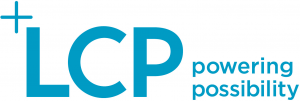You’ve heard of blockchain, right?
Of course you have! Blockchain appears to be everywhere these days and is receiving an increasing amount of attention in various media channels.
Thanks, partly, to the meteoric rise and partial fall of the volatile bitcoin crypto currency, which utilises blockchain as its underlying technology, blockchain has risen in prominence over the last couple of years. In many circles, it is now being heralded as another new technology that promises to change the world as we know it.
But promises are one thing, and reality is another. Will the current hype of blockchain really significantly change the financial world as we know it? Or is it another example of hype that will be forgotten about as we move on to the next big thing? I don’t believe so. In my humble opinion, blockchain is here to stay and actuaries should be paying very close attention.
This article, directed at actuaries, will explain the basics of blockchain in very simple terms and we will then examine some UK/European-based use cases where blockchain is already being used or developed.
WHAT IS BLOCKCHAIN?
Blockchain is essentially a peer-to-peer data storage technology that aims to remove the need for intermediaries. The need for trusted third parties in transactions, often results in significant expense and time delays. But what exactly is this technology?
First the long-winded definition. Blockchain is described as:
a transparent replicated, secure, decentralised, incorruptible, immutable (still debatable), irrefutable, distributed ledger of economic transactions in a database utilising “blocks” that are time-stamped using cryptographic encryption.
Wow – lots of big words! Let’s take a big step back and try to keep things simple.
First, I want you to imagine the favourite tool of the junior actuary. Yes, the humble spreadsheet that we all know and love (or hate if you are a data scientist!). Well, it turns out that blockchain is kind of like an Excel spreadsheet. They share a lot in common. For example:
- Spreadsheet rows are analogous to blockchain blocks. A block is essentially a collection of data. In a similar fashion to a ledger spreadsheet having rows added, a blockchain has blocks of information added. It views each block as a legally valid record of a transaction and together they form a chain of blocks (i.e. a blockchain).
- Shared access (but with no central owner). In the same way a single Google spreadsheet can be shared and seen amongst all users, a blockchain is transparently distributed across a diffuse network of personal computers or servers (known as nodes) in a decentralised fashion. Any changes made will occur instantaneously within the entire network. Furthermore, this decentralised sharing also results in the blockchain being immutable thanks largely to consensus driven collaboration. The decentralised aspect of blockchain technology also means that transactions cannot be lost or manipulated.
- Locked spreadsheet cells = Secure blockchain. In a similar fashion to spreadsheet cells or rows being locked to avoid changes, the blockchain does not allow the editing of any information that is already there. Any changes must be made via the addition of a new block of information. This is important since it means that all historic changes are transparently recorded providing an audit trail that is available to the blockchain members.
- Password protection = blockchain hashing. Spreadsheets can be somewhat protected via a password system. In contrast, blockchains utilise cryptography and hashing to enhance security. Hashing involves taking an input value and then applying a mathematical algorithm to produce a cryptographic output of a fixed length. This hashing process enhances the security of the data as individuals attempting to reverse engineer cannot deduce the original input value.
So what does this all mean? Well, the advocates (of which there are many) of blockchain technology point to its ability to solve the issue of ‘trust’ across networks. Complete strangers are supposedly able to complete transactions with minimal ‘middle-man’ interaction (and hence friction payments) and without the risk of counterparty default.
BLOCKCHAIN INDUSTRY IMPACT
Blockchain has been touted as having the potential to change many industries. The promised lands of change range from banking to finance to security to healthcare to marketing and even entertainment. As I said, there are some big promises being made with blockchain!
For actuaries, the main industry of interest is insurance. On the face of it, blockchain would appear to make enormous sense to use within the insurance world. Operational inefficiencies abound in insurance as manual claims handling and other frictions permeate throughout the chain. Insurance is built on a foundation of trust and given this foundation seems to have been somewhat shaken over the last few decades, many now view blockchain (also known as “the internet of trust”) potentially coming to the partial rescue.
SMART CONTRACTS
Perhaps the main use of blockchain within insurance is the enabling of event-triggered smart contracts. Under such a contract, claims processing could be automated such that the policyholder does not have to make a claim and the insurer does not have to administer the claim. Verified inputs that are clear, objective and unambiguous (such as that from death registries, or official weather reports for example) would be recorded on the blockchain and if the conditions for paying out on the smart contract are met then the smart contract automatically pays out. Plain, simple, automated, cost-reducing and with the potential to largely counteract fraud and enhance customer satisfaction – what’s not to like about this grandiose blockchain theory?
To provide a tangible feel to the blockchain smart contract let’s now examine some UK/European-based insurance blockchain use cases that are currently in existence. Firstly, we will look at a marine blockchain insurance solution that has been developed by Ernst & Young (EY) in the UK along with Guardtime, A.P. Møller-Maersk, Microsoft, Willis Towers Watson, XL Catlin, MS Amlin and ACORD, and is now in commercial use. Secondly, we will discuss French multinational insurer, AXA’s recently launched flight delay insurance that runs off a blockchain platform. Thirdly, we examine a product being developed and built by the European-based Etherisc community.
Marine Insurance
Marine insurance covers a ship’s vessel, its container boxes and cargo as well as the various liabilities (e.g. pollution) that ship owners may incur. Marine insurance is notoriously lacking in transparency and expediency due to numerous intermediaries that are typically involved in the inefficient and costly purchase of cover. EY, Guardtime and several other insurance industry leaders recently launched “Insurwave”, described as the world’s first blockchain solution for marine insurance. The blockchain solution was designed to remove much of the inefficiencies the industry has historically experienced. The proof of concept was deemed to be a success and in May 2018 the product was commercially released.
The Insurwave platform uses distributed ledgers to store additional data points allowing for more sophisticated underwriting as well as smart technology contracts to reduce costs throughout the chain. According to the EY website the “technology will support more than half a million automated ledger transactions and help manage risk for more than 1,000 commercial vessels in the first year.” London-based EY global insurance leader, Shaun Crawford, is leading the project and had the following to say:
“The platform allows multinational companies to share vital data sets relating to the assets that are being shipping around the world with brokers, insurers and reinsurers in a secure, private network. InsurWave brings much needed technology to the industry and removes the need to maintain a paper trail while giving everyone in the value chain ‘a single version of the truth’ on a near real-time basis. If data on the ships changes, for example, or there are losses, everyone in the chain is notified”
When I recently spoke with Shaun he mentioned that they are now planning to build out their offering in both China and Singapore. More proof indeed that blockchain is here to stay.
Flight Delay Insurance
In 2017, French insurer, AXA, released a blockchain-based insurance product called ‘Fizzy’ that utilises smart contracts to pay out on flights that are delayed for a period of more than 2 hours. Flight delays are tracked in real time through global air databases and get recorded as fact on the blockchain eventually resulting in an automated payout for the policyholders, without the need for a claim filing or additional paperwork.
Whilst the scale of this project is admittedly small, when one considers the number of daily delayed flights across the globe and the policyholder hassle factor involved in claiming for a flight delay, it isn’t difficult to imagine why this type of insurance will increasingly appeal to many travellers who value simplicity and convenience. I know from my own experience that claiming for a risk on something like this is typically cumbersome, time-consuming and frustrating and I can certainly see the appeal from a customer point of view. Interestingly, whilst the insurance company may save on administrative costs, they will also need to consider the additional costs they bear from paying out on 100% of eligible claims, as many previous non-claiming policyholders are given automated payouts.
Hurricane Protection
Etherisc is described as a decentralized platform built for the insurance industry and since 2016 they have been building and developing various decentralized insurance apps on the Ethereum blockchain.
An example product developed by the Etherisc community is their hurricane protection solution which aims to protect low-income individuals and small business owners from the damage caused by hurricanes. According to their website automatic claims are paid out if wind speeds are recorded within 30 miles of the individual’s home or business. Again one can see how the input which clearly and objectively defines the payout (in this case wind speed) can be recorded on a public blockchain resulting in automation, reduced overheads and quick service. In fact Hurricane Guard’s website compares the 9-12 month regular insurance payout period to their envisaged (the product is not yet licensed) payout period of 24 hours as well as pointing to a much reduced premium, complete transparency and zero deductible.
SUMMARY
Whilst blockchain is still very much in a developing stage, clearly it is already having an impact and could well be a technology that will rival the internet in terms of influence on business. Insurance companies seem particularly well-placed to benefit and it will be interesting to watch how things unfold over the next few years. Of course there are still many hurdles to overcome, including scaling the technology, regulation and obtaining consumer confidence.
Whatever your view on blockchain, I think it is safe to say that insurance is rapidly changing as we continue to enter the digital age where technology-based solutions increasingly permeate throughout businesses.
This article was written by Dr Mark Farrell, Programme Director and Senior Lecturer at Queen’s University Belfast. Read more of his posts at proactuary.com
You can read more Hot Topics on our Careers Advice page.




